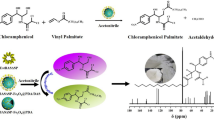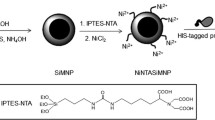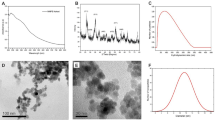Abstract
A triple-point mutated fish microsomal epoxide hydrolase (mEH) gene from Mugil cephalus was expressed in Escherichia coli in the presence of various chaperones to prevent protein aggregations. The enantioselective hydrolytic activity was more than doubled by co-expressing the EH mutant gene with pGro7 plasmid. The highly active EH mutant with a his-tag was immobilized onto magnetic silica assembled with NiO nanoparticles. The immobilized mEH mutant was re-used more than 10 times with less than 10% activity loss. (S)-Styrene oxide with 98% enantiopurity was repeatedly obtained with over 50% of the theoretical yield by the magnetically separable high-performance mEH mutant.




Similar content being viewed by others
References
Brady D, Jordaan J (2009) Advances in enzyme immobilization. Biotechnol Lett 31:1639–1650
Choi SH, Kim HS, Lee EY (2009) Comparative homology modeling-inspired protein engineering for improvement of catalytic activity of Mugil cephalus epoxide hydrolase. Biotechnol Lett 31:1617–1624
de Vries EJ, Janssen DB (2003) Biocatalytic conversion of epoxides. Curr Opin Biotechnol 14:414–420
Fink AL (1999) Chaperone-mediated protein folding. Physiol Rev 79:425–449
Hwang S, Choi CY, Lee EY (2010) Bio- and chemo-catalytic preparation of chiral epoxides. J Ind Eng Chem 16:1–6
Kasai N, Suzuki T, Furukawa Y (1998) Chiral C3 epoxides and halohydrins: Their preparation and synthetic application. J Mol Catal B: Enzym 4:237–252
Kim J, Grate JW, Wang P (2006) Nanostructures for enzyme stabilization. Chem Eng Sci 61:1017–1026
Lee KS, Lee IS (2008) Decoration of superparamagnetic iron oxide nanoparticles with Ni2+: agent to bind and separate histidine-tagged proteins. Chem Comm 2008:709–711
Lee SJ, Kim HS, Kim SJ, Park S, Kim BJ, Shuler ML, Lee EY (2007) Cloning, expression and enantioselective hydrolytic catalysis of a microsomal epoxide hydrolase from a marine fish, Mugil cephalus. Biotechnol Lett 29:237–246
Lee KS, Woo MH, Kim HS, Lee EY, Lee IS (2009) Synthesis of hybrid Fe3O4/silica/NiO superstructures and their application as magnetically separable high-performance biocatalysts. Chem Comm 25:3780–3782
Sørensen HP, Mortensen KK (2005) Advanced genetic strategies for recombinant protein expression in Escherichia coli. J Biotechnol 115:113–128
Steinreiber A, Faber K (2001) Microbial epoxide hydrolases for preparative biotransformations. Curr Opin Biotechnol 12:552–558
Tran TAT, Struck DK, Young R (2005) Periplasmic domains define holin-antiholin interactions in T4 lysis inhibition. J Bacteriol 187:6631–6640
Widersten M, Gurell A, Lindberg D (2010) Structure-function relationships of epoxide hydrolases and their potential use in biocatalysis. Biochim Biophys Acta 1800:316–326
Acknowledgment
This work was supported by the Marine and Extreme Genome Research Center Program, Ministry of Land, Transportation and Martime Affairs, Republic of Korea.
Author information
Authors and Affiliations
Corresponding author
Rights and permissions
About this article
Cite this article
Choi, S.H., Kim, H.S., Lee, I.S. et al. Functional expression and magnetic nanoparticle-based Immobilization of a protein-engineered marine fish epoxide hydrolase of Mugil cephalus for enantioselective hydrolysis of racemic styrene oxide. Biotechnol Lett 32, 1685–1691 (2010). https://doi.org/10.1007/s10529-010-0335-4
Received:
Accepted:
Published:
Issue Date:
DOI: https://doi.org/10.1007/s10529-010-0335-4




